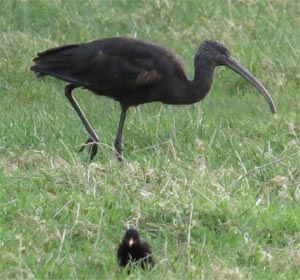| March
/ 2018 - Michael Ryan
|
| |
|
With
their fiendishly difficult to extract roots, Dandelions have long been
considered a serious enemy of gardeners but they are actually a very
useful plant as a early provider of pollen for many bees, hoverflies
and other insects since they flower so early in the year before most
garden plants. The National Biodiversity Data Centre have an All-Ireland
Pollinator Plan to help bees and other insects and on their website,
www.biodiversityireland.ie they have a number of very worthwhile pdfs
to download for specific groups or areas such as gardens, schools, farms,
councils and tidy town organisations, showing how they can create pollinator
friendly environments. In the garden section the first of ‘5 Examples
of Pollinator Friendly Actions for Gardens is’. Let the Dandelions
Bloom! They provide vital food for pollinators, especially in early
spring when little else is flowering in our gardens’.
Apparently, in a very encouraging development Dalkey Tidy Towns have approached the Parks Department with a view to making Sorrento Park a pollinator friendly park. A small compensation for Lucy being home sick with a very nasty flu was looking out the kitchen window and seeing two uncommon visitors to the bird feeders, a pair of jays. Her attention had initially been attracted by the finches and tits taking to the air, very unhappy with their interlopers and she saw one angry goldfinch actually pecking ineffectually at one of the jays as it skilfully hung upside down extracting sunflower seeds from the feeder. |
 Spare that dandelion, they’re very important for insects Photo Michael Ryan |

A jay visiting
the bird feeders, welcome by me but not the other birds
Photo Lucy Desierdo
|
|
|
We
eventually got down to Wicklow to have a look for the Glossy Ibis some
of a number of these birds that had arrived in Ireland this winter. Some
settled in Bunihinly bog in Co Westmeath and another at Lough Boora Discovery
Park in Offaly but luckily for us three of them decided to come a lot
closer and flew into Birdwatch Ireland’s East Coast Reserve at Newcastle.Two
years ago Dick Coombes wrote an article in Birdwatch’s Wings magazine
speculating that glossy ibis might become a breeding species in Ireland
following on Little Egrets which have gradually expanded their range north
from Southern Europe and first nested in Ireland in 1997 with a dozen
pairs simultaneously breeding in a Co. Waterford heronry and now commonplace
around the country. The Glossy Ibis are also birds of wetlands, resembling a curlew with long legs and down curving bill but larger and much darker. Although a gloomier theory is the birds are moving because their breeding areas are drying out glossy ibis have always been known as adventurous birds, who have been expanding their territorial range for centuries (flying across the Atlantic Ocean to South America from where they’ve spread north) and it would be more positive to hope they were moving to expand their numbers. Some previous glossy ibis that arrived here had large coloured rings which could be read by telescope showing those particular birds came from Cota Donana in Spain At the East Coast Reserve, a Little Grebe and a flock of Wigeon swam in front of the first hide on glistening smooth water. Some people arrived who told us a woodpecker had been seen earlier and was doing its display drumming on a tree on the other side of the road from the reserve but no sign of the ibis until suddenly a pair flew past, right in front of the hide. |
| We moved to another hide, couldn’t see where they’d landed but saw three buzzards soaring in lazy spirals before one of them swooped low and suddenly the glossy ibis were in the air again. We moved back to the reserve entrance and from there we could see not two but three glossy ibis striding around jabbing their long bills into the soft ground and wandering in and out of a line of beech trees. When passing Booterstown Marsh on the Dart you can often see groups of little egrets roosting on the raised mounds in the marsh at high tide and, who knows, in years to come they might be joined by glossy ibis. | ||
DALKEY
HOME PAGE | DALKEY
COMMUNITY COUNCIL | DALKEY
HERITAGE COMPANY | CANNONAID



 Glossy
Ibis, one of three at Newcastle East Coast Nature Reserve
Photo Michael Ryan
Glossy
Ibis, one of three at Newcastle East Coast Nature Reserve
Photo Michael Ryan